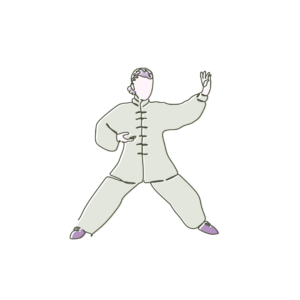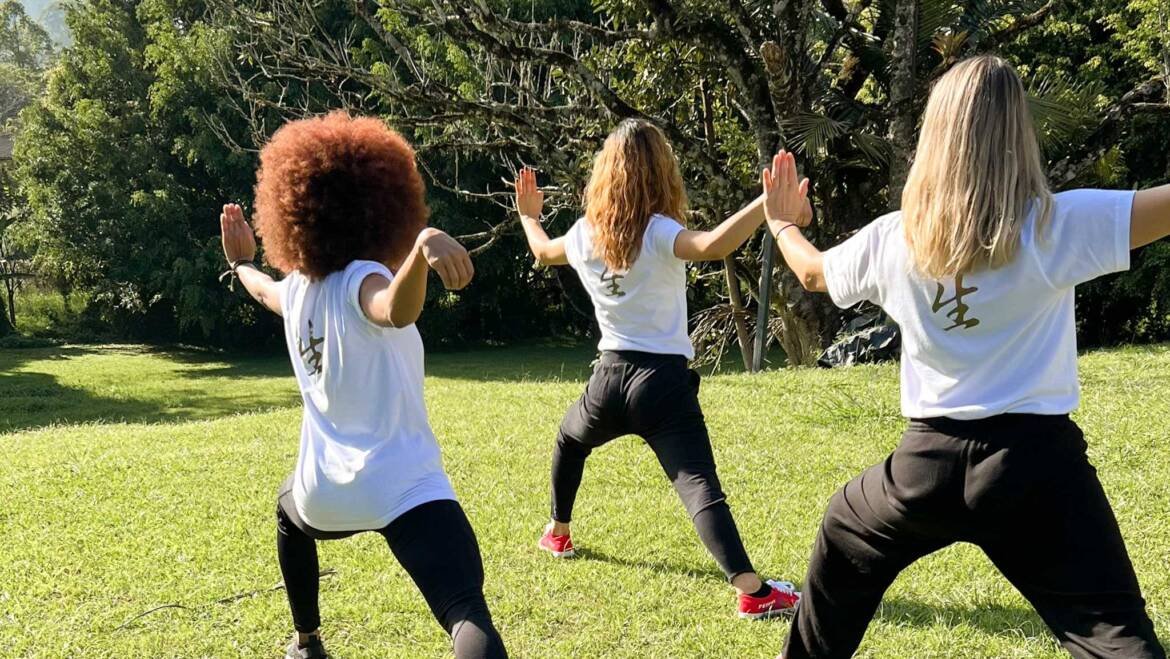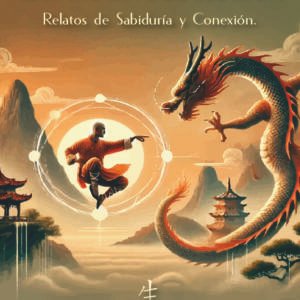Discover the Internal Martial Art: Tai Chi, Health and Harmony in Movement
Tai Chí is an internal martial art that is part of the therapies of Eastern Medicine, since it helps maintain and prevent health while healthy and enhances the health of the practitioner.
Internal martial arts are known as nèijiā, which focus mainly on the development of QI, inner strength, deep, physical and mental relaxation and breathing management.
The Tai Chí is also known as Tai Chi Chuan or Tàijí Quán 太極拳. It can be translated as a supreme definitive fist. It is believed that it originated in the thirteenth century in China. Legend has it that it was developed by Chang San-FENG which was inspired by a duel between a cobra and an eagle where Cobra achieves through concentration avoid being pecked and rather gives the eagle a deadly blow.
What is Tai Chí?
It is a martial art that can serve to learn about combat and personal defense, where the force of the adversary is used to direct it against it, but also, it is a practice that cultivates mental, emotional and physical health, which makes millions of people around the world seek her.
There are many styles of Tai Chi, the five best known are:
Chen style (陳式 Chénshì)
-
- It is one of the oldest styles.
- It takes its name from the Chen family from the Chinese village Chenjiagou (陳家溝), located in the Wen district (溫縣) of Henan province.
- It is characterized by being the style that includes the most martial practices.
- Alternate between slow, fast and vigorous movements.
- The postures tend to be lower.
Yang style (楊氏 yángshì)
-
- It is one of the best known styles in the world.
- Its founder is Yang Luchan (楊露禪), known as Yang Fukui (楊福魁).
- Tends to make wide, slow and gentle movements where one movement joins another in a fluid way.
- It has a sequence of 24 movements that is one of the most practiced modern forms.
WU/HAO Style (武郝式太極拳 Wǔ HǎO Shì)
-
- Its creator is Wu Yuxiang 武禹襄.
- It focuses on simple, circular and high position movements.
Wú style (吳氏太极拳 wú shì)
-
- It was developed by Wu Quanyou 吴全佑 and Wu Jianquan 吴鉴泉.
- More closed and compact movements are made and the trunk is slightly inclined.
Sun Style (孙氏太极拳 Sūn shì)
-
- Its creator is Sun Lutang 孫祿堂.
- This style is characterized by high positions, light, fluid and fast movements.
Tai Chi emphasizes the practice of physical movements carried out with great awareness, one of the principles being softness accompanied by breathing, for this reason, it can be said that it is a practice of meditation in movement, promoting internal work to develop Qi energy, promote relaxation, and mental calm.
What is required to practice?
- Although there is no standardized clothing for practitioners, and in addition to varying according to style, it is usual to dress with flat and thin sole shoes, loose and comfortable clothing.
- It is common that traditional costumes such as the following are used:

- It is a discipline that can be practiced at any age, including seniors, because it can be adapted to the needs of each individual.
- The way of practicing varies according to the style, but it is common for them to be practiced:
- Already established forms of fluid sequences.
- The shapes (套路 taolu) are already established sequences where the fight against an imaginary adversary is represented.
- Hay formas que pueden durar sólo unos minutos y otras extenderse por un tiempo prolongado.
- Los pasos que componen la secuencia tienen nombres que: describe la aplicación marcial del movimiento, o explica el carácter del movimiento, o expresa de forma poética.
- The shapes (套路 taolu) are already established sequences where the fight against an imaginary adversary is represented.
- Strengthening exercises. (maintaining the principle of softness and awareness).
- Forms and exercises as a couple (the best known is the 推手 tuī shǒu, where pressure is applied to the arms to unbalance the opponent)
- Sequences with weapons, being the most common:
- The fan ( 扇 Shan)
- The stick (棍 gùn),
- the saber (刀 dāo),
- the sword (劍 jian),
- The spear (槍 qīang).
- Already established forms of fluid sequences.
- It is recommended to practice with teachers or teachers because the individualized guide promotes the activation of the meridians that the individual requires and also learns to activate and manage the Qi.
The main style that is practiced in Sheng Health is the Chen style, which is believed to be the oldest style. Our therapists use this ancestral tool to stay healthy, manage their Qi, and thus be able to offer a better service to their patients while being an example of health and well -being for them.
In addition, in some therapies, patients are taught to support their treatment at home and learn tools to maintain their health.
Tai Chi has many benefits:
On a physical level:
- Increases coordination, balance, strength and flexibility.
- Improves circulation, immune system, balance blood pressure, and benefits digestion.
- Prevents unbalances of the organism.
- It generates proprioception of the body, giving greater awareness of it and therefore, improves posture and prevents injuries.
- It helps stimulate energy channels, promoting harmony of Qi energy and therefore health and well-being.
On a mental and emotional level:
- Quality breathing and conscious movements are practiced, helping to regulate the nervous system, calm the mind, increase inner peace, connect with the essential being, manage emotions, have self-knowledge, and live more present and conscious.
- The breathing that is usually used is Dāntián 丹田. This breathing is important because it stimulates an area of the body that has the greatest capacity for energy transformation. Therefore, when breathing from there, the Qi is stimulated and this promotes its balance, harmony and management.
How is Dāntián 丹田 breathing done?
-
- Inhalation by the nose carrying the air to the area under the navel letting it inflate.
- Exhalation, pulling the air slowly by the nose, noticing how the stomach deflates.
Taichi helps maintain health and prevent unbalances, for this reason, is part of traditional oriental medicine.
If you want to schedule an appointment you can click on the link
You can see more of our blog clicking on the link
Visit our YouTube channel by clicking here
You listen to our podcast
Follow us on Instagram



2 Comments
Add Comment